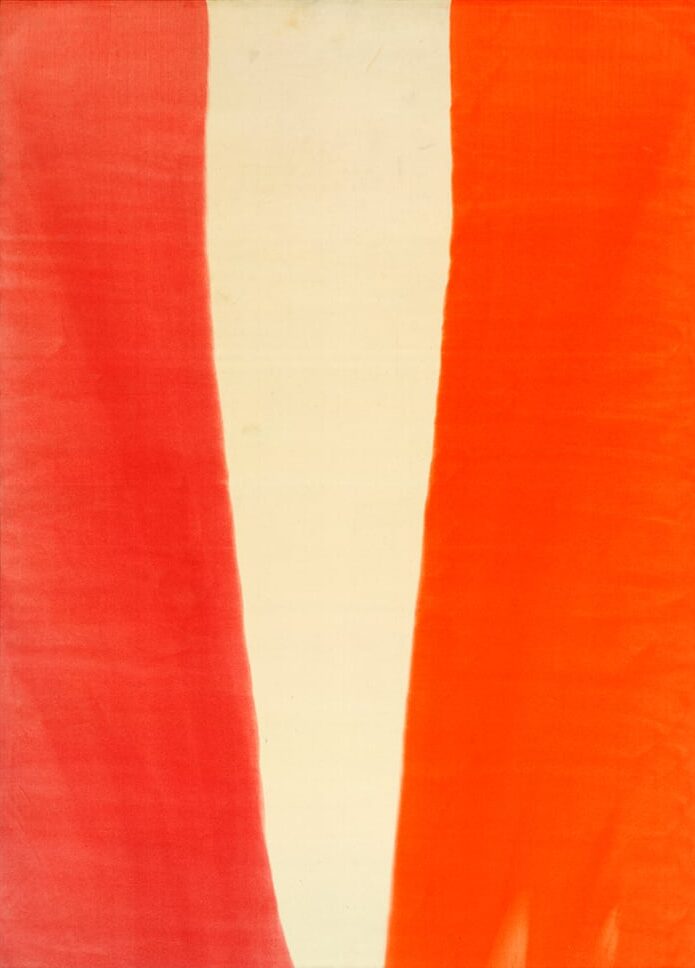
Loom, 1959
Morris Louis (1912–1962, USA)
| Medium: | Acrylic on canvas |
| Dimensions: | 349 x 251 cm |
about the work
With an extensive œuvre of more than 400 works in mainly unusually large-scale formats and his talent attested to by art critics at an early stage, Morris Louis soon became well known in the America of the 1950s. What is all the more astonishing is that the artist initially played no active role in New York’s art scene. After graduating from the Maryland Institute of Fine and Applied Arts in Baltimore in 1932, Louis worked in seclusion in a small studio, lived in New York for a short time, but then moved back to his hometown. The artist’s visit to Helen Frankenthaler’s studio left a lasting impression on him, as he got to know a new way of dealing with paint i.e. pouring it on to the canvas. This unusual technique is especially apparent in his three most important series of works, Veils, Unfurleds and Stripes, in which Louis purposefully impregnates the canvas with layers of paint.
His work in the Reinhard Ernst Collection indicates a change in Louis’ œuvre. In his Veils series he still covered the canvas with a black film of paint, but with Loom the intense luminosity of colors is revealed in his works. The image shows two opposing painted surfaces that rise up against each other. They go beyond the edge of the picture and overcome the pale canvas. Exhibited at the New York »French & Company« show organized by Clement Greenberg in 1960, Loom similarly represents the friendship between the artist Louis and the art critic Greenberg. He and the artist Kenneth Noland were among Louis’ closest contacts in the last years of his life. The international art market became receptive to the works of Morris Louis only in the 1960s. Overshadowed on the one hand by his premature death in 1962, his posthumous inclusion in documenta III and IV in Kassel emphasizes the great importance of Morris Louis in the art scene of the 1950s and 1960s on the other.